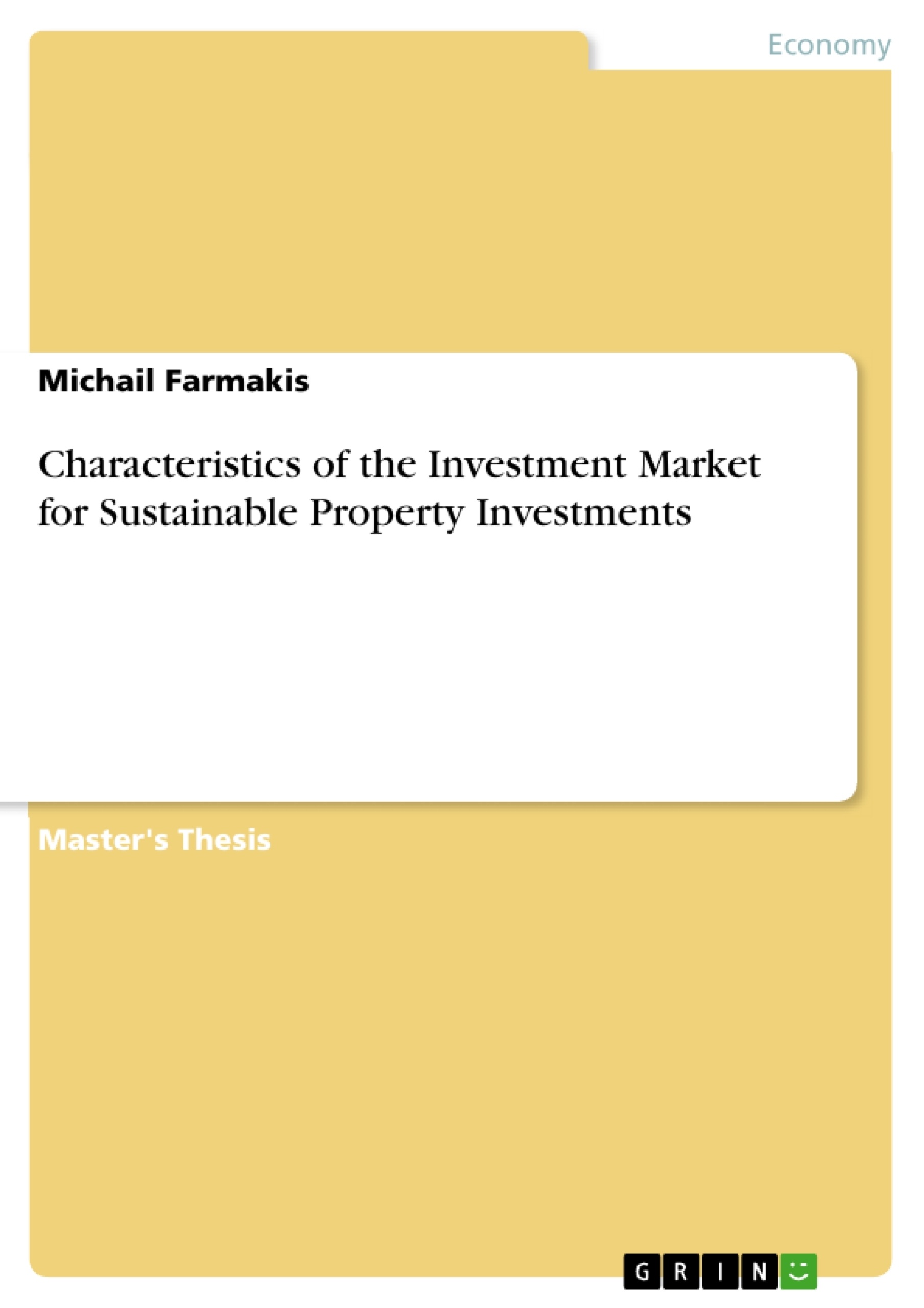The penetration of sustainable buildings into the market is a trend of great interest. Some regions see imbalances between the demand for sustainable space and the supply from the real estate market. However, some other markets balance supply and demand well. Especially in Europe, the supply of sustainable property investments is lagging behind demand and needs further attention.
Nevertheless, real estate professionals in Europe are slowly becoming aware of the possibilities of this trend. A major contribution to this development is the growing number of certificated buildings across Europe, raising the visibility of sustainability
Sustainable Property Investments 2
issues. Many discussions have taken place on the sense and nonsense of sustainability certificates. In spite of this, the number of certified buildings continues to increase and certification systems are continually improved. The Deutsche Bank Towers, for example, are both accredited with two certificates: the LEED and the DGNB certificate.
An increasing number of owners and developers choose certificates as an assessment method or benchmark for their building. Sustainability certificates are a testimony to improved building technologies, which are usually difficult to observe. This enhances the transparency of a building’s sustainable features and may therefore lead to increased investments. However, the number of certifications has been slow to pick up in Europe.
In response to this situation this work aims to give a detailed analysis of the characteristics of sustainable property investments. Because of the interconnectedness of socially responsible investments and sustainable property investments, this work outlines both, in order to keep in focus the various actors, historical developments, and strategies.
Moreover, this work is an exploration of possible drivers for and impediments to the diffusion of sustainable buildings. This work aims to answer the questions of what forces drive the supply and demand of sustainable property investments and to what extent. These questions are analyzed with a particularly European focus, as the current state and development in Europe differs from that of other regions.
Table of Contents
- Introduction
- Problem Definition and Objectives
- Course of the Investigation
- Fundamentals and Definitions
- Megatrends and Sustainability
- Sustainability and the Real Estate Industry
- Green Buildings
- Economic Dimension of Green Buildings
- Ecological Dimension of Green Buildings
- Social Dimension of Green Buildings
- Corporate Sustainability
- Sustainable Property Investment Movement
- Socially Responsible Investment
- Actors and Strategies
- Development
- Performance
- Socially Responsible Property Investment
- Development
- Actors and Strategies
- Factors of Movement
- Regulations and Legal Framework
- Assessment Methods and Certificates
- Key Actors
- Status Quo
- Drivers of Demand and Supply
- Penetration of SRPI in European Markets
- Conceptual Framework
- Data
- Hypotheses
- Methodology
- Results
- Summarizing and Interpreting Empirical Results
- Implications and Limitations of Analysis
- Conclusion
Objectives and Key Themes
This thesis aims to provide a comprehensive analysis of the characteristics of sustainable property investments, particularly in European markets. The work examines the factors that drive and impede the diffusion of sustainable buildings, focusing on the interplay between supply and demand. Additionally, the thesis explores the relationship between socially responsible investments and sustainable property investments. Key themes explored include: * **The growing demand for sustainable property investments.** * **The factors influencing supply and demand of sustainable buildings.** * **The role of assessment methods and certifications in promoting SRPI.** * **The significance of key actors like valuers and banks in the SRPI movement.** * **The potential market for SRPI and its relationship to the overall SRI market.**Chapter Summaries
Introduction
This chapter introduces the thesis and its objectives, focusing on the increasing importance of sustainable development within the real estate industry. The chapter highlights the growing awareness of sustainability principles among real estate professionals, driven by factors like government regulations, public pressure, and demand for socially responsible investments. It underscores the crucial role of real estate investors in mainstreaming sustainable buildings.Fundamentals and Definitions
This chapter defines key terms and concepts related to sustainable property investments, including megatrends like urbanization, climate change, and resource scarcity. It also explores the impact of the real estate industry on these megatrends, highlighting its responsibility in promoting sustainable development.Sustainable Property Investment Movement
This chapter delves into the socially responsible investment (SRI) and socially responsible property investment (SRPI) movements. It examines the historical development, key actors, and strategies associated with both movements. The chapter also highlights the factors driving the SRPI movement, including government regulations, assessment methods, and the role of key actors.Penetration of SRPI in European Markets
This chapter presents a detailed analysis of the penetration of SRPI, specifically certified buildings, across European markets. It examines the data and methodology used for the analysis, including a comprehensive set of independent and dependent variables. This section includes a comprehensive analysis of the results of the empirical analysis, highlighting the key factors that influence the diffusion of SRPI.Keywords
The primary focus of this thesis is sustainable property investments (SRPI), examining its characteristics and market penetration, particularly in Europe. This encompasses the investigation of key concepts like Socially Responsible Investment (SRI), green buildings, corporate social responsibility (CSR), and various assessment methods and certifications such as LEED, BREEAM, DGNB, and HQE. The analysis delves into the role of key actors in the SRPI movement, including property investors, valuers, and financial institutions. Additionally, it examines the impact of various drivers on the supply and demand of sustainable buildings, exploring factors like population, GDP, capital market development, and the SRI market volume.- Arbeit zitieren
- B.Sc. Michail Farmakis (Autor:in), 2012, Characteristics of the Investment Market for Sustainable Property Investments, München, GRIN Verlag, https://www.grin.com/document/200493



